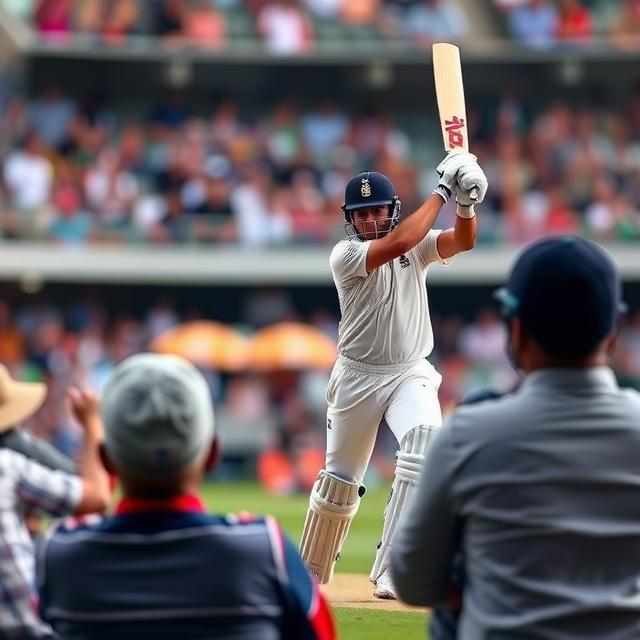The Enduring Cricket Rivalry of India and Pakistan: A Clash of Cultures and Passions

The Enduring Cricket Rivalry of India and Pakistan: A Clash of Cultures and Passions
The cricketing rivalry between India and Pakistan is more than just a sporting contest; it’s a cultural clash, a reflection of the intricate and often fraught relationship between two nations with shared history but diverging paths. This article delves into the rich tapestry of this rivalry, exploring its historical roots, the passionate fanbases, and the unique dynamics that continue to shape the contest on the field. From the initial skirmishes to the modern-day epic battles, this page will transport you to the heart of this iconic sporting feud.
Click here to dive deep into the historical background and the legacy of this captivating contest.
A Legacy of Tension and Thrills
The rivalry’s genesis can be traced back to the partition of India in 1947. The formation of two separate nations, with their own identities and aspirations, naturally led to a sense of competition and rivalry across all fields, cricket included. Early matches were characterized by a cautious respect, soon followed by spirited contests that showcased the intense spirit of both nations.
A Symphony of Emotions: The Fanbase Phenomenon
One cannot discuss this rivalry without acknowledging the passionate fanbases that fuel the matches. The fervor and excitement, often transcending geographical boundaries, are palpable even years after a match has concluded. The vibrant celebrations and the heart-wrenching disappointments reflect the deep-rooted connection between the people and their national heroes.
The sheer size and the energy of the crowds are undeniable. Imagine stadium stands filled with a sea of colors, each representing the proud traditions of India and Pakistan. These aren’t just games; they’re events that bring communities together, uniting them under a shared passion for cricket.
Beyond the Boundary: The Political Context
The political landscape surrounding this rivalry often casts a long shadow over the matches. Tensions and complexities between the two nations have, unfortunately, been reflected in the atmosphere leading up to and during these encounters. Political considerations, often intertwined with religious or ideological differences, shape the narrative surrounding these contests, creating a sense of gravity and stakes that go beyond the simple sport.
However, despite the political context, the cricket matches themselves often serve as a platform for a more nuanced understanding. Moments of camaraderie, respect, and even reconciliation can arise amidst the intensity of the game. This highlights the power of sports to bridge divides and promote unity, even when underlying political situations are tense.
The Evolving Nature of the Rivalry
The rivalry, while rooted in history, continues to evolve. Emerging talents, shifting strategies, and changing dynamics within the teams introduce fresh dimensions. It’s a complex mix of familiar themes—national pride, fierce competition, and a touch of underdog spirit—interwoven with the introduction of new heroes and new trends in cricket’s ever-changing landscape.
The rise of new players, innovative coaching approaches, and adapting to the modern game’s demands shape a dynamic rivalry. This evolution ensures that the conflict remains vibrant and relevant, engaging new generations of fans who are eager to witness this iconic clash.
The Cricket Stadiums – More Than Just Arenas
Cricket stadiums are more than just venues; they’re cultural hubs, pulsating with the energy of the passionate fans. The atmosphere is electric, a blend of roars, cheers, and occasional sighs that amplify the drama of the game.
From the bustling markets around the stadiums to the communal gatherings of fans, cricket becomes a social event that transcends the playing field. This communal aspect is vital to understanding the deep connection between the sport and the people of both nations.
The Impact on Cricket Globally
Beyond the borders of India and Pakistan, this rivalry resonates with cricket enthusiasts globally. The intensity, skill, and drama captured in these contests attract a worldwide audience, ensuring that the sport remains a captivating spectacle. The rivalry serves as a testament to the global appeal of cricket, a sport connecting millions across continents.
The shared love for cricket brings people together. Whether you’re a seasoned fan or a newcomer to the sport, witnessing these encounters is an enriching experience that reveals the global reach of this beloved game.
Turning Points in the Rivalry
Throughout history, certain matches have acted as pivotal turning points. These moments often highlight not only the sporting excellence of players but also the shifts in momentum and emotional intensity of the competition. Such matches leave a lasting impact, altering the landscape of the rivalry in profound ways. One can vividly recall specific matches that redefined the contest’s nature, becoming iconic due to their significance.
Analyzing these moments provides insights into the evolution of the rivalry, highlighting its resilience and its capacity to surprise. It reveals not only the athletic prowess of the players but also the cultural context that imbues these matches with such extraordinary energy.
Conclusion: A Timeless Rivalry
The India-Pakistan cricket rivalry is a complex and multifaceted phenomenon. It’s a testament to the passion for sport, the significance of national pride, and the interplay of cultural and political forces. It’s a competition that has transcended the boundaries of a simple sporting event, solidifying its place as an enduring aspect of the sporting and cultural landscapes of both nations. Beyond the records and the victories, it’s the emotional rollercoaster, the unwavering support, and the shared passion that truly make this rivalry something special, something that will continue to captivate and inspire for years to come.
This rivalry is more than just a series of matches. It’s a reflection of the intricate relationship between two nations. Understanding the historical context, political undertones, and cultural significance is essential to fully appreciating this enduring rivalry.